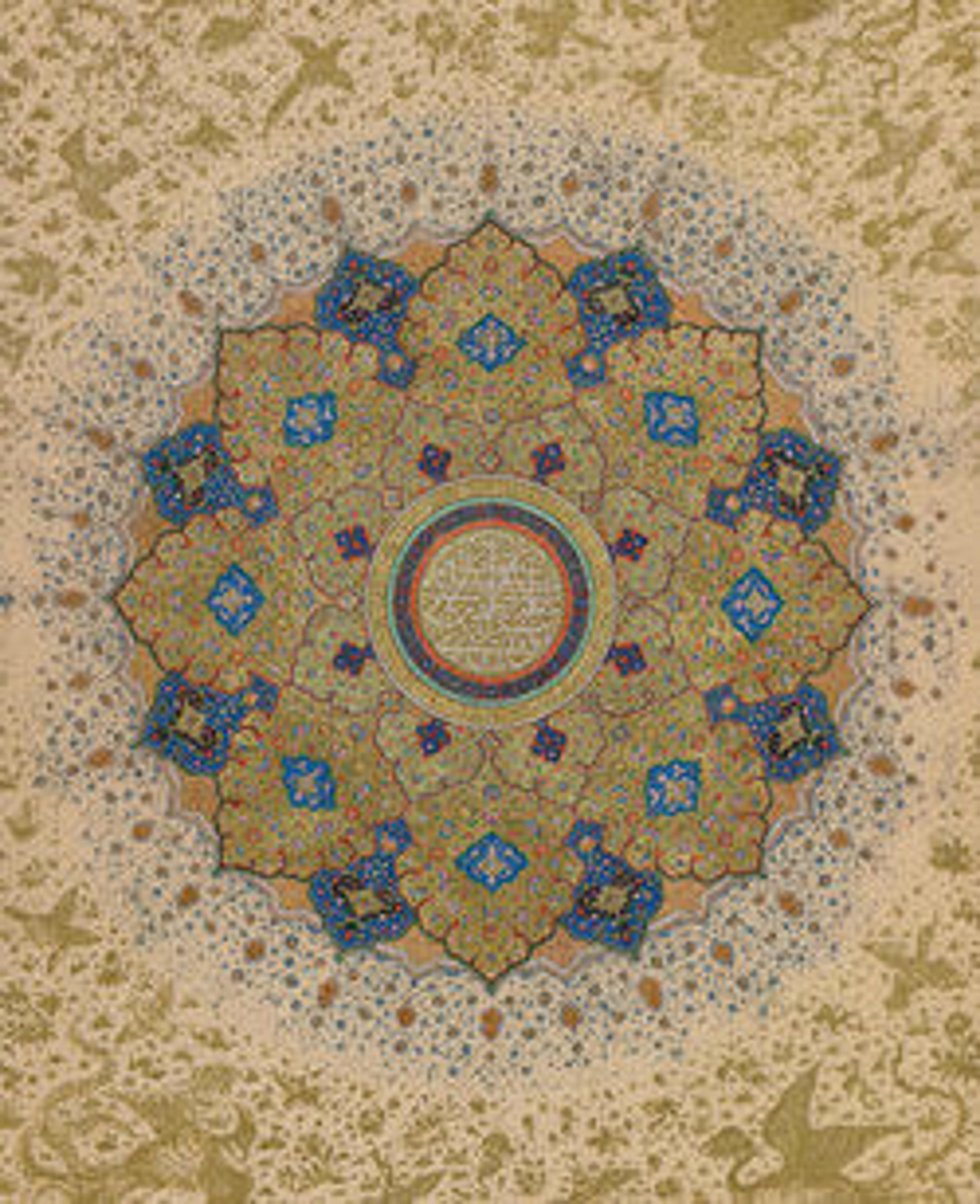"Funeral Procession", Folio 35r from a Mantiq al-Tayr (Language of the Birds)
This illustration is associated with a story related by the hoopoe as a response to a bird who complains about his fear of death. In the story, a son grieves the death of his father in front of his coffin and a sufi soothes him, explaining that his father had experienced much pain and that no one can avoid death. Here, the painter depicts the incident as occurring in front of a cemetery gate. The scene behind the gate is replete with motifs that are irrelevant to the story itself. The viewer at the court may have enjoyed deciphering them.
Artwork Details
- Title:"Funeral Procession", Folio 35r from a Mantiq al-Tayr (Language of the Birds)
- Calligrapher:Sultan 'Ali al-Mashhadi (Iranian, Mashhad 1453–1520 Mashhad)
- Author:Farid al-Din `Attar (Iranian, Nishapur ca. 1142–ca. 1220 Nishapur)
- Date:dated 892 AH/1486 CE
- Geography:Made in present-day Afghanistan, Herat
- Medium:Opaque watercolor, silver, and gold on paper
- Dimensions:Painting: H. 9 3/4 in. (24.8 cm)
W. 5 1/2 in. (14 cm)
Page: H. 13 in. (33 cm)
W. 8 1/2 in. (21.6 cm)
Mat: H. 19 1/4 in. (48.9 cm)
W. 14 1/4 in. (36.2 cm) - Classification:Codices
- Credit Line:Fletcher Fund, 1963
- Object Number:63.210.35
- Curatorial Department: Islamic Art
More Artwork
Research Resources
The Met provides unparalleled resources for research and welcomes an international community of students and scholars. The Met's Open Access API is where creators and researchers can connect to the The Met collection. Open Access data and public domain images are available for unrestricted commercial and noncommercial use without permission or fee.
To request images under copyright and other restrictions, please use this Image Request form.
Feedback
We continue to research and examine historical and cultural context for objects in The Met collection. If you have comments or questions about this object record, please contact us using the form below. The Museum looks forward to receiving your comments.
